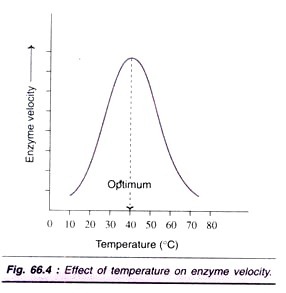In this article, we propose to discuss the two forms of stems. They are: (1) Erect Forms and (2) Weak Forms.
A. Erect Forms:
A majority of plants have the erect habit. These again may be subdivided into herbs, shrubs and trees according to the strength of the stem.
i. Herbs:
The herbaceous stem is extremely succulent. The plant is necessarily very small and may not even rise above the surface of the soil. Very often (specially among Monocots) it is subterranean giving rise to some leaves at soil level.
At the reproductive season the scape or the flowering shoot, which is a short stem bearing the inflorescence, springs forth. Such a plant may be called acaulescent (caulis=stem) as it is apparently stemless.
Because of its special nature the stem is often modified. Grasses and some other herbs have special methods of vegetative reproduction which enable them to creep and cover a large surface of soil.
They may, therefore, be called creepers. Plants of the grass type are sometimes stronger when they give rise to erect stems called culms which are more or less hollow at the internodes but solid at the nodes.
A culmination of this sort of development is met with in bamboo which is really a tall grass but can no longer be called a herb.
According to the duration of its life herbs may be:
(1) Ephemerals—when the plants- live only for a few weeks. This happens when the growing season is very short as near deserts or in very cold countries. The plant has to complete its life cycle within that short time.
(2) Annuals—They last for one season every year after which they flower and die. There are a large number of annuals in our country represented by the seasonal flowers, vegetables and crops.
(3) Biannuals or biennials require two years to complete their life cycle. Many annuals of our country like the cabbage and the radish are biannuals in cold countries as the temperature there does not allow sufficient growth in one year.
(4) Perennials grow for a longer time. This perennation may not be in one stage but in annual stages as in plants growing by rhizomes, etc. In these, the aerial shoot dies every year but the underground parts (rhizome, etc.) form the link year after year. Bananas are true perennials as are all the shrubs and trees.
Some plants are stronger than herbs but still not strong enough to attain the level of shrubs. Vegetables like brinjals and chillies come under these. These have got slightly woody stems. They may be called woody herbs or undershrubs.
ii. Shrubs:
Shrubs are larger than herbs and usually give rise to woody branches from the level of the soil forming a bushy plant without any main trunk. The woody branches are never as strong as the trunk of a tree and the plants are much smaller than trees. Shrubs are very common among flowering plants as rose, china-rose, etc.
iii. Trees:
Trees are the biggest plants with prominent woody trunks which usually give rise to branches above. Among them (1) the caudex usually does not branch at all.
The lateral buds on the tall columnar trunk are dormant or dead. On the top there is a crown of leaves. This is the habit of palms. They may branch only abnormally. An un- branched stem like this may also, be called columnar.
(2) In the excurrent trees the main stem grows indefinitely and the side branches develop in a strict acropetal order as in the Mast tree (Polyalthia longifolia), Casuarina and Pine.
(3) The apical bud of a deliquescent tree is weaker than the strong lateral buds and very often, it is destroyed at some phase of its life so that the tree has a spreading habit as in banyans and many common trees.
B. Weak Forms:
Weak plant forms are not capable of growing erect without some help. These may be creepers, trailers or climbers.
i. Creepers :
Creeping plants are actually herbaceous plants. The plants themselves are erect but they give rise to small horizontal branches which are weak and after growing for some length get rooted and give rise to small daughter plants which again increase in a like manner.
Thus, a plant radiates in all directions and soon covers up a big area. This is the habit of grasses (e.g., Cynodon dactylon or dub), Oxalis, sweet potato (Ipomoea batatas), etc.
The most usual propagation is by means of runners (Centella asiatica ) but may also be by thin rhizomes, suckers, etc.
Creepers actually represent not single plants but a series of plants of successive vegetative generations—mother plant, daughter plants, grand-daughter plants, and so on. Sometimes the creepers are regarded as a special group of trailers.
ii. Trailers:
Trailers are prostrate plants having weak, long and slender stems which trail along the surface and do not try to climb up any support. These are different from creepers in being single plants which do not root from the nodes and thus do not form daughter plants.
As the plants usually lie flat they are called procumbent . A very common example is Basella. In some cases the branch, after growing horizontally for some length, straightens up the growing head like an erect plant.
Such a trailer as Portulaca or Lindenbergia is termed decumbent . Branches of some-trailers grow profusely in all directions as in Boerhaavia (Punar- nava) when it may be termed diffuse.
iii. Climbers:
The climbers also are weak plants but they usually grow besides some support and climb up the latter so as to expose their leaves fully to light.
They are thus biologically well adapted to grow in forests in the shade of tall trees as they are able to utilise the available light while the expenditure of material in forming a strong stem is avoided. The comparatively soft weak stem is thus able to bear large leaves, flowers and fruits.
The actual methods of climbing are various. Darwin, in his classical work on Climbing Plants recognised four groups of climbers—(1) twiners; (2) tendril climbers; (3) root climbers and (4) scramblers. To these may be added (5) adhesive climbers and (6) lianas.
(1) Twiners or stem climbers:
The weak stems of some plants have the habit of twining round the supports by a special type of growth movement which makes the stem coil round a support. The growing stem apex moves in a circle (nutation) and coils round the support if it be available.
The coiling is now known not to be caused by contact but due to the action of gravity. It is specific for the type of plant whether it will coil upwards to the right (anti-clockwise from the top or sinistrorse) or to the left (clockwise or dextrorse).
Among common twiners Ipomoea quamoclit , Clitoria ternatea, Convolvulus sp. are sinistrorse while Mikania scandens, Asparagus sp., Dolichos sp. , Phaseolus sp. are dextrorse. A few plants may twine the either way.
(2) Tendril climbers:
The climbing of tendril climbers is effected by specialised climbing organs called tendrils which are sensitive and capable of growing spirally and encircling a support when it comes in contact with the latter.
Different organs of the plant are seen to be modified into tendrils; viz., modified axillary stem (in Passiflora or Passion flower ); modified stem apex (in Vitis sp); modified leaf (in Lathyrus sp. or wild pea); modified leaflet (in Pisum sp. or pea); modified pedole (in Clematis sp. and also, possibly, Nepenthes); modified leaf tip (in Gloriosa); modified stipule (in Smilax); modified inflorescence axis (in Antigonon and Cardiospermum halkacabum).
The tendril of Cucurbitaceae is very common but its exact nature is uncertain. It may be a prophyll.
(3) Root climbers:
These plants give out adventitious roots from their nodes which act as holdfasts in fastening the climber to the support. Piper betle or betel vine, Piper longum and other members of Piperaceae; Scindapsus of Aroideae are common examples.
Dodder (Cuscuta) is a twining parasite which is further helped in climbing by the sucking roots (haustoria).
(4) Scramblers, ramblers or struggling plants and hook climbers:
A number of weak plants do not actually climb but slowly grow over other bushes and rest there. They are helped in retaining this position by means of superficial outgrowths of the nature of prickles.
Examples of such scramblers are found in rose (having
curved prickles), cane (Calamus – scrambling by prickles on leaf and by means of long slender whip like stalk produced from the leaf sheath which is completely covered by curved hooks and helps the plant to grow luxuriantly in tropical forests), Artabotrys (curved hooks on flowering peduncles), Lantana (prickles on stem), Zizyphus (spinous stipules which persist after leaves are shed), and so on.
(5) Adhesive climbers:
These show extreme modifications where they are provided with organs that serve as adhesive discs which may adhere to flat surfaces. Thus these plants may even grow along flat walls.
Ampelopsis of Vitaceae is such a plant growing adhesive discs from the tendrils. In some Ficus sp. (e.g., Ficus repens) and in Ivy (Hedera helix) such adhesive discs grow from climbing roots so that the plants are able to form carpet-like growths covering steep walls.
(6) Lianes or lianas:
This is a type of perennial climbers that is found in deep forests. The plants at first grow like ordinary twiners growing up tall trees. Once the top leaves have reached sunlight the weak stem becomes stronger and stouter until it becomes woody almost like a slender tree.
Such woody climbing stems are then found to hang from tall trees and to join different trees like very stout ropes rendering the forest impenetrable. Common examples are Hiptage bengalensis, Tinospora, species of Bauhinia, Ficus, etc.








